Vanguard 101 Part 1: What's in a Deck?
Let's assume that you have a basic understanding of the rules in Vanguard. You understand the methods, but do you have the tools to apply those methods and achieve victory? Your deck essentially directs the flow of gameplay. It could have a strong rush tactic, it can become a late-game powerhouse, or it could be the ultimate defensive wall. How does one reach this point, though? Before we get to that, let's go over the very basics of deck building.
The first step to understanding a Vanguard deck is understanding its ratios. You want a specific amount of grade 1's, grade 2's, and grade 3's so you can consistently have the right amounts of them when you want them. Of course, the most important fact to consider is the probability of getting a grade 1, grade 2, and grade 3 in your opening hand, so you aren't missing any ride phases. Through calculations, trends, and personal preferences, I can confidently say that 17 grade 0's, 14 grade 1's, 11 grade 2's, and 8 grade 3's is the optimal ratio. Statistically speaking, using a ratio of 17:13:11:9 has a higher chance of giving you consistent hands, but the statistical difference is very low and having nine grade 3's can lead to some predicaments. You can also differentiate from these ratios by one or two cards, but don't go overboard with it.
Now, what fills in these ratios exactly? Going back to our 17:14:11:8 ratio, if we assume we are maxing out as many cards as possible, we get this combination:
Ratio #1
17 / 14 / 11 / 8
1 Starting Vanguard
4 Trigger A
4 Trigger B
4 Trigger C
4 Trigger D
4 Grade 1 A
4 Grade 1 B
4 Grade 1 C
2 Grade 1 D
4 Grade 2 A
4 Grade 2 B
3 Grade 2 C
4 Grade 3 A
4 Grade 3 B
Not counting our grade 0's, we can see that we have a total of nine unique units in this list. There are once again always variations with each combination. For example, you can go with a 3:3 split with two grade 1's, you can drop two of your grade 2's to add two copies of a fourth grade 2, etc. You don't want to have too many different unique units however, because you then start to lose sight of what your deck accomplishes.
The next step is to fill in our placeholders with actual cards. One of the easiest ways to do this is with an archetypal deck, so we'll be using Liberators as an example. For even more simplicity, we'll do this with only cards that have had English releases. So let's get to building our deck!
Instead of starting from the bottom, I'm going to start from the top. It's more important to determine our grade 3's than any other units in our deck, because our grade 3's contribute the most to our winning strategy. In the case of Liberators, our grade 3 choices are:
- Goshawk Liberator, Cadeau
- Liberator of the Round Table, Alfred
- Onslaught Liberator, Maelzion
- Solitary Liberator, Gancelot
It's small, but as we look through the list, we can determine that Solitary Liberator, Gancelot is already a solid choice to start with. He has 11000 power and comes with a powerful Break Ride skill, so he easily deserves a spot in our deck. We also want to max him, not only to fill the model but also because we want to ride him just about every game, due to his usefulness in the vanguard circle.
Moving on, Goshawk Liberator, Cadeau is an interesting grade 3. He gets a power boost when you're at four damage, plus he has a non-Limit Break skill that grants you cheap advantage. However, his effectiveness falls off late game, and being a 10000 vanguard unit makes him tiny in the rear-guard circle, as well as the vanguard circle, despite his power boost limit break. I don't think making him the focus is a good idea, so we'll pass him up.
Onslaught Liberator Maelzion is... Well, it doesn't offer much. It comes with a 10000 base, and all it can do is go to 13000 at the cost of a counterblast. This potentially makes 21000 columns with an 8000 booster, but considering Gold Paladin's grade 1 vanilla, Gareth, isn't a Liberator, odds are we won't be including him. Maelzion definitely doesn't offer much to serve as a boss unit, so we'll be passing him up as well.
Liberator of the Round Table, Alfred, on the other hand, is an excellent choice for a boss unit. He comes with a nifty ACT skill that, at the cost of counterblasting two Liberators, puts the top card of your deck onto the field. This gives you the ability to generate advantage without relying on other factors. His Limit Break is also very strong. For each of your Liberator rear guards, he gains +2000 power during your turn. This means that with a field full of Liberators, Alfred boasts a power of 21000 un-boosted, making it very hard for your opponent to guard him. Along with his 11000 base, his effects make him the ideal boss monster to include in here and wrap up our grade 3 lineup.
With Alfred and Gancelot chosen, we can max them out at four copies a piece and include them in our deck. Here's what we have so far:
Let's Build Liberators!
?? / ?? / ?? / 8
4 Solitary Liberator, Gancelot
4 Liberator of the Round Table, Alfred
Grade 3 Tips and Tricks:
1. 11000 bases are good! In fact, the metagame revolves around them. This is important to keep in mind, especially because 11000 units without boosters can hit other 11000 units, which is something that 10000 units cannot! Secondly, 20000 is a much easier column to create than 21000, giving you a defensive advantage. Despite them falling out of favor, there are still occasions where they'll come up, so it's good to be prepared. Thirdly, 11000 units paired with 7000 units (the most common power for grade 1s) can hit for 18000, which is one of the perfect numbers for fighting 13000 power Cross Rides (stay tuned for a future article on these kinds of numbers)! With all this being said, there are still some 10000 grade 3's that are worth playing. It all comes down to whether you can value the skill on the card to be worth using.
2. Break Rides are also good! Very good, in fact. They're defining the metagame as we speak. They're capable of putting you ahead of your opponent when used at the right time, and even offer the potential burst to end games!
3. Your boss unit (usually) has to do a lot. Keep in mind, that for a large majority of your fights, your vanguard will be a grade 3, so you have to be sure that they offer a lot. This is extremely important, because your boss units play a huge role in the outcome of a fight. Cards with Limit Break skills are typically good candidates for boss units, so look out for those!
Our next step is to select our grade 2 units! Our grade 2s are the ones who are going to be on the front lines the most, so they need to be capable of dealing damage while offering useful skills. Like we did with the grade 3's, let's list all of the grade 2 Liberator units. Our model above shows that we need to choose at least three of them.
- Blaster Blade Liberator
- Liberator of Royalty, Phallon
- Liberator of Silence, Gallatin
- Liberator of the Flute, Escrad
- Zoigal Liberator
Next is Liberator of Royalty, Phallon, the +3000 attacker, or power attacker, for Liberators. Power attackers like Phallon have risen to become one of the more common and useful units of our time. They all start with 9000 bases, but if they attack (as a rear guard), and if you have a vanguard with X in its name, they gain 3000 power for that battle (X is the archetype that the card belongs to). For example, Eradicators have Spark Rain Dragon, Beast Deities have Hatred Chaos, and so on. But what is it that makes these units so useful?
The key here comes from one of our aforementioned tips. 11000 base grade 3s are very powerful right now, meaning that if you don't have a booster, only units with 11000 or more power can touch them. In Phallon's case, 12000 power certainly fits this requirement. As you play Vanguard you'll find that you won't always be in situations where you have the boosters you need to make strong attacks. If you're facing an 11000 grade 3, and the grade 2's at your disposal can only reach 9000 or 10000 power on their own, then you're not in a very good spot, are you?
Another important factor is that these power attackers make your Cross Ride matchups a lot easier. A Cross Ride is a unit that, if you have its previous form in your soul, gains +2000 power during either player's turn, meaning that they come with a massive 13000 defense that you usually need to tackle. Thankfully, power attackers can help you build proper columns to overcome these defenses. A power attacker combined with a 6000 or 7000 grade 1 reaches the proper threshold of 18000+ to create a strong attack against a Cross Ride unit.
One more important number to keep in mind with power attackers is 19000, which is when you boost them with a 7000 grade 1. Why is this significant? The answer is simple: rear-guard control. Your average grade 2 has a power of 9000, and if you throw a 19000 attack at them (this obviously applies to lower powers as well), you demand a 15000 guard investment from your opponent to keep it on the board. Usually, your opponent won't think twice before letting the unit die, so it's helpful to keep this in mind when fighting against valuable grade 2's.
After all is said, it's clear that including Phallon is quite important, so we will do so.
Liberator of Silence, Gallatin is the 10000 vanilla grade 2 for Liberators. It really doesn't do much at all, except be a Liberator, and on occasion, act as a strong wall to tackle. As I mentioned earlier, the average power for grade 2's is 9000, making it impossible for them to hit Gallatin without a boost. This factor makes Gallatin a valuable turn 2 ride, as your opponent has to commit more to damage you in the early game. However, it still stands true that this unit has no skills at all, and is also weak to the power attackers I just went over, so we will probably have to pass our old pal Gallatin up.
Liberator of the Flute, Escrad is the perfect example of a pressure unit. If his attack hits a vanguard, you can counterblast 1 Liberator to call the top card of your deck to an open circle. Card advantage for cheap, am I right? Well, there are a few downsides. The biggest glaring downside to this card is that its skill is on-hit. On average, it will attack for 16000 boosted, usually requiring only 10000 shield to stop it. Not only that, but it has to hit the vanguard, something that your opponent is usually blocking anyway, so it seems difficult to gain advantage off of this card as a rear guard.
But what if it's your vanguard?
Vanguard attacks are always recognized as the hardest attacks to block, because they're accompanied by drive checks. And of course, these drive checks can randomly add +5000 power to anything you need. If you're riding Escrad on turn 2, your opponent will become reluctant to guarding it. This is because that 10000 shield that they could normally drop to stop it could be broken by any of your 16 triggers. As a result, you're almost guaranteed to get a card from its skill.
Escrad still isn't useless outside of this situation, however. Even though I already said that your opponent can easily stop this ability, that doesn't necessarily mean it's a bad thing. In Vanguard it's common to guard less in the early game, so you can build up damage to counterblast with. Whenever you have the opportunity to gain advantage from Escrad, you're telling your opponent, "guard this attack NOW or get punished for it." This way, you're almost always gaining advantage from Escrad's attack, at most stages of the game. You either force out shield from your opponent, or put a new card on your side of the board.
This is the core idea behind pressure units. Create reasons for your opponent to defensively invest outside of damaging their Vanguard. These sorts of units will put you ahead in the early game, as long as their effects can be applied. Escrad can easily fit in in our lineup as our third grade 2.
We forgot to go over a unit though, didn't we? We did, but we're not missing much though. Zoigal Liberator is an 8000 base unit that gains 3000 power when it attacks if you have three or more Liberators on the field. It accomplishes the same thing that Phallon does, except with a weaker base and a weaker attack value, so there's no chance of this making it in our deck.
After going through all five grade 2's, we determined that we want Blaster Blade Liberator, Liberator of Royalty, Phallon, and Liberator of the Flute, Escrad in our deck. How do we assign the quantities this time, however? We can max out on two of them, but we can only use three copies of the third. This is nothing too significant, as there isn't much difference between using three or four of a unit. Though, it is definitely true that we want to draw more copies of Escrad and Phallon before Blaster Blade, so we can assign the third slot to him. The cost of counterblast 2 is almost impossible to pay more than once, considering the other counterblast units in our deck, so we aren't missing out on much.
Let's Build Liberators!
?? / ?? / 11 / 8
4 Liberator of Royalty, Phallon
4 Liberator of the Flute, Escrad
3 Blaster Blade Liberator
4 Solitary Liberator, Gancelot
4 Liberator of the Round Table, Alfred
Grade 2 Tips and Tricks:
1. Grade 2's are usually the second most important units in terms of skills. When filling up your grade 2 lineup, make sure that you're not just adding powerful attackers. Slight variance in what your cards do can give you answers to slightly different situations, but don't add too much variance!
2. Power attackers are very important! If there are power attackers that you can add to your deck, prioritize them over most of your other choices. They're the most effective units when it comes to creating powerful columns.
If your deck can't use the 9000 power attackers, the next best thing are Limit Break power attackers. These are 8000 units that almost every clan, and they gain +3000 power when they attack and you have a unit on the board with aLimit Break skill. Most of the time all of your boss monsters have some kind of Limit Break skill, so these are very easy to fit in. The downsides are that they have weaker bases and don't do as much until you ride to grade 3, but they still get the job done. Though, in the end, it's very good to have just about any grade 2 that can reach 11000 without jumping through tons of costs or restrictions.
3. Grade 2's are the perfect units to use to apply pressure. On-hit skills are very common among them, and including a few can help create pressure from the early game to the late game. Some require counterblasts, others unflip damage for more counterblasts, and some just come without costs. Try different kinds of pressure units to figure out what compliments with your deck the most!
Now that we've finished with our primary attackers, it's time to dive into our support units. Let's take a look at the grade 1 Liberators we can use.
- Fast Chase Liberator, Josephus
- Future Liberator, Llew
- Halo Liberator, Mark
- Little Liberator, Marron
- Pomerugal Liberator
Future Liberator, Llew is the 10000 vanguard booster for Liberators. Just about every clan has one of these guys, where you have to fulfill a certain condition for it to give a juicy boost to your vanguard. The awkward part about Llew is that our grade 3's already give a lot of power to themselves. Gancelot gains +2000 power when he attacks, plus he gives +10000 power to the unit that rides over him, and Alfred has his Limit Break to give him loads of power. Though, with our limited Liberator grade 1 pool, he still might be able to fit in, so we can take him for now.
Halo Liberator, Mark is our sentinel of choice here. Sentinels have always been controversial within the community. They come with 0 shield value, but when they're used to guard, you can discard another card to completely nullify the attack. Some argue that they can clog in your hand, but I strongly believe that you need to run four Sentinels in almost every deck. There are a few exceptions, but those exceptions don't occur often and are odd decks to begin with. The fact that you can nullify any attack makes these important enough, especially with Break Rides making vanguard attacks even harder to guard. They usually come with a hefty price tag, but in an environment where you build a deck to be as optimal as it can be, you need four Sentinels.
Quick note, there's also a Gold Paladin Sentinel named Halo Shield Mark, but he's not a Liberator. Don't get the two units mixed up!
Next on our list is Little Liberator, Marron. Marron is the grade 1 version of a power attacker. They function exactly like the grade 2 power attackers, but instead of 9000 power, they have 7000 power. They're almost as important as the grade 2's, but they accomplish different things. The first and most important thing is that they improve your early game. Without a booster, these guys can hit everything up to 10000 vanilla grade 2's, making them a relevant column all by themselves. They can also be very relevant late game, because they serve as your backup plan if you run low on grade 2 and grade 3 attackers. The bottom line is that they're solid boosters and attackers at the same time, so there's almost no reason not to run them.
Poor Pomerugal Liberator... Why couldn't you be more useful? It's hardly efficient in counterblasts, as using up one for +1000 power hardly makes any difference at all. The only reason to play this thing is if you need another 7000 power Liberator, which isn't exactly necessary.
Now that we've gone over all of the grade 1's, it's safe enough to say that we have enough to build a solid lineup. We want to max out on Josephus, Mark, and Marron for their usefulness, and we can dedicate the last slot to two copies of Llew, because we will almost never need more than one.
Let's Build Liberators!
?? / 14 / 11 / 8
4 Halo Liberator, Mark
4 Little Liberator, Marron
4 Fast Chase Liberator, Josephus
2 Future Liberator, Llew
4 Liberator of Royalty, Phallon
4 Liberator of the Flute, Escrad
3 Blaster Blade Liberator
4 Solitary Liberator, Gancelot
4 Liberator of the Round Table, Alfred
Grade 1 Tips and Tricks
1. 7000 is currently the most useful number. This goes hand in hand with 9000 being the average for grade 2's. The two numbers combined give you 16000, which is the threshold for a strong attack against 11000 bases. 5000's and 6000's can usually be really awkward to utilize, but there are a few that are valuable additions to decks.
2. Run four Sentinels. I really can't stress this enough. They never actually clog, and they will save you time and time again.
3. 8000 vanillas usually don't cut it. We used to live in a metagame where they did, and each clan has one, but 8000 almost never makes any relevant columns now that 7000 can't today, plus having no additional skills hurts them a lot. There are still decks where 8000 vanillas are useful, but this is usually due to small card pools and stuff like that.
Now we're in the final stretch: grade 0's. Grade 0's make up your trigger lineup and your starting vanguard, and usually nothing else. Trigger lineups are usually very easy to create, especially for Liberators.
Looking at our deck as it stands, we can conclude that it can consistently produce a strong center line, along with some strong rear-guard columns through Gancelot's skill. The important part here is that your center line is usually huge, which makes critical triggers very effective. If you play an abundance of critical triggers, you'll check them more often, and your opponent will begin to fear them more. When they see an Alfred attack for 28000 or 31000 and they're at four damage, they can't afford to see you land that attack backed by a critical trigger, so they'll do all they can to stop it. Bottom line, we want lots of critical triggers. Thankfully enough, Liberators have two of their own.
- Liberator of Hope, Epona [Critical]
- Strike Liberator [Critical]
After critical triggers, we have stand triggers. Stand triggers tend to rely more on powerful rear guard columns than powerful vanguard columns, so we will forego them in this deck.
To round off our trigger lineup, we'll compliment our offensive triggers with defensive triggers. Liberators have their own draw trigger and heal trigger, so we'll gladly include both.
- Armed Liberator, Gwydion [Draw]
- Elixir Liberator [Heal]
- Holy Squire, Enide
- Little Fighter, Cron
- Spring Breeze Messenger
- Wingal Liberator
- Stronghold of the Black Chains, Hoel
Holy Squire Enide - Easy, counterblast free unit that can give you simple advantage for using it. Works well because both of our bosses have Limit Break.
Little Fighter Cron - One of the most popular kinds of starting vanguards around. It can turn a counterblast and itself into a chance to get a grade 3 in case you either didn't open one or want to get another. My personal favorite.
Spring Breeze Messenger - Gives generally good advantage at the cost of a counterblast. It is very easy to redeem it for value if you boost your vanguard with it, and it has a chance of grabbing Josephus for more value.
Wingal Liberator - It can trade itself for Blaster Blade Liberator in the soul if it boosts and hits. It's cool... But what are the odds of us riding Blaster Blade Liberator, given we usually will prioritize riding Escrad and we only have three copies to begin with?
Stronghold of the Black Chains, Hoel - It doesn't give as good of a payoff as the others do, but if it floats your boat, go ahead.
I personally am going to go with Little Fighter Cron as my starter, which finally completes our Liberator deck!
Let's Build Liberators!
17 / 14 / 11 / 8
1 Little Fighter, Cron
4 Strike Liberator
4 Liberator of Hope, Epona
4 Armed Liberator, Gwydion
4 Elixir Liberator
4 Halo Liberator, Mark
4 Little Liberator, Marron
4 Fast Chase Liberator, Josephus
2 Future Liberator, Llew
4 Liberator of Royalty, Phallon
4 Liberator of the Flute, Escrad
3 Blaster Blade Liberator
4 Solitary Liberator, Gancelot
4 Liberator of the Round Table, Alfred
And there you have it! This is the process that I usually go through when I build my decks. You can always deviate from this and develop your own strategies, but this is the method that I prefer and it's the easiest for me. As you build different decks, you'll notice that your pool of choices will expand well beyond five. To tackle this, just remember the importance of card advantage, power attackers, and pressure units to guide your way through all of them. Though as I mention an expanding pool of choices, I want to go over two changes that I would personally make to this deck.
-2 Future Liberator, Llew
+2 Silver Fang Witch
While I said in the beginning that it's good to include only Liberators in this deck due to especial counterblasts like Alfred and Escrad, that doesn't mean you can play a couple of non-Liberators that have useful skills. Silver Fang Witch is a very simply grade 1 that soulblasts two when it's called from anywhere to draw one card. For a deck that almost never soulblasts, the cost is very negligible. It's also a very easy card to drop early if you're using Little Fighter Cron. If you use Cron's skill on the turn you ride your grade 2, you will have two soul after you search, meaning you're free to drop Silver Fang Witch. The only contradiction here is that if you use Cron you usually won't have enough damage to use Escrad, so it can be hurtful at the same time. Nonetheless, it gives you options, and there's very little harm in including this card.
With Silver Fang Witch's inclusion, it's safe to say that the deck generates a lot of card advantage by itself, hence me proposing this second change:
-4 Armed Liberator, Gwydion
+4 Flame of Victory
I said earlier that I didn't want to include Flame of Victory because of the name, but with 43/49 cards being Liberators, it's safe to say that our damage zone won't get too contaminated in gameplay. The deck already has a lot of ways to put itself ahead, so we don't necessarily need draw triggers to help us with that. Instead, we're taking the man-mode approach and playing a total of 12 critical triggers. Plus, Flame of Victory's skill can be useful here and then to make your columns more effective.
Those are the only two changes I would personally make to the deck. Feel free to try both versions of the deck and decide for yourself which version you like more. I hope you make use of these strategies when building your next, or even your first deck! That's it for now, stick around for our next episode of Vanguard 101, where we go over power lines!



.jpg)
.jpg)
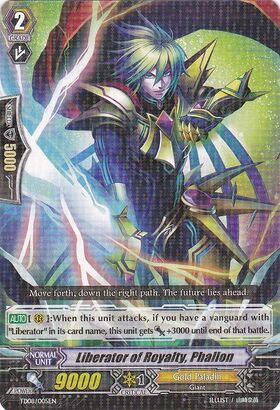
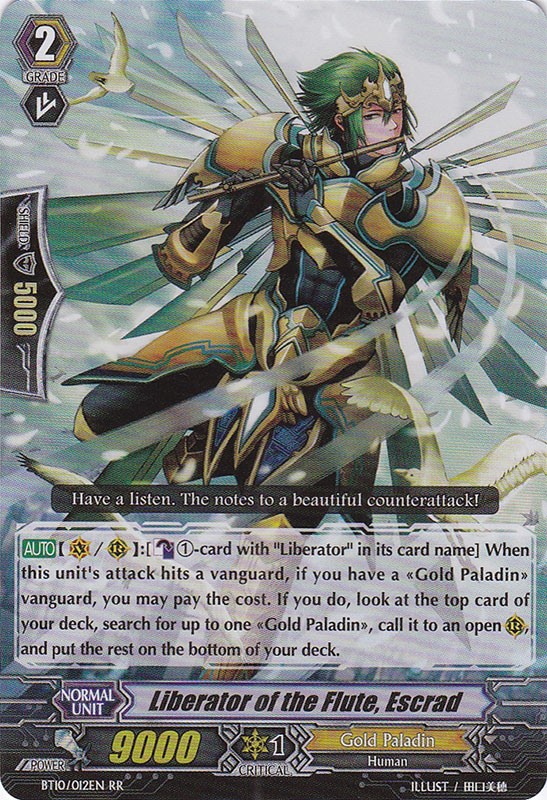
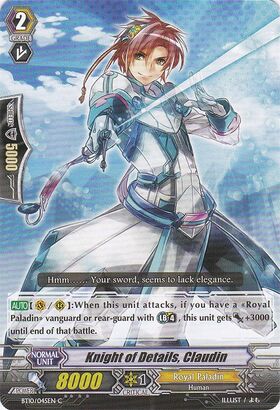
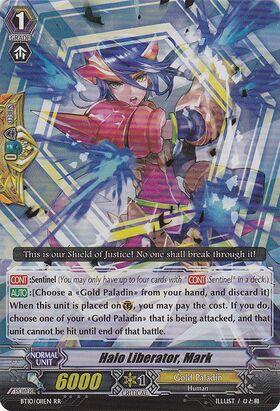
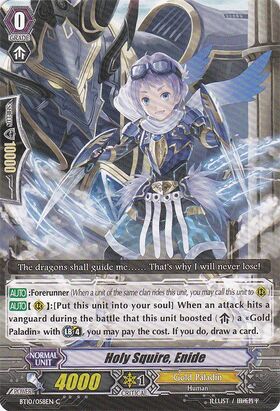
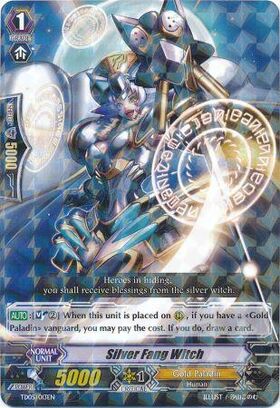




As a newbie to Vanguard, and having started from scratch with Dark Irregulars, I think this article is outstanding and gives great insight to the game that I wouldn't have picked up on for a long time. Deck building is often one if my weaknesses in card games, so this is a great read for me. Well done.
ReplyDeleteI do have to say, it's a fair base idea for the basic deck build. there are exceptions to certain decks however, like you said, and I think it might be prudent to note those clans as bad starting choices. if I were to put in my notions on that that list would include at minimum would be the following, for your consideration.with clans paired up as gateway clans to mature in game style and understanding
ReplyDeleteAqua force, for their non reliance on multi attacks, gateway clan for this one would be nova grapplers,
angel Feather, a deck with consistency but no hand, and combo heavy.the gateway deck for them would be the oracle think tank.
pale moon. as it focuses more on pressure creation over power rows,gateway with spike brothers.
the final clan is genesis, as super heavy soul charge leads to mill out, dark irregulars have more constant befit from soul charging and soul size
oops, mistype on aqua force, meant full reliance on multi-attack
Deleteand this is not to imply in any way the gateway decks are weaker ether. all of these decks stand on fairly equal footing, just the other decks need a better understanding of game mechanics before they should be used.